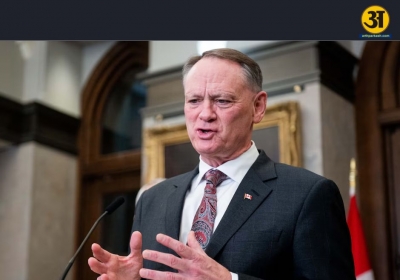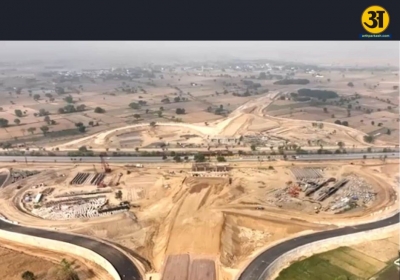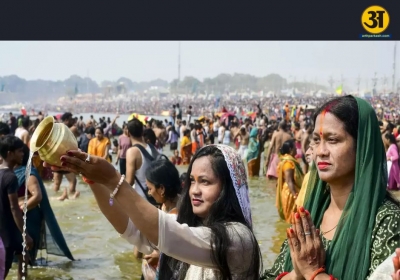
The target of 400 Vande Bharat trains by 2025 too fast and furious.
By 2025, there will be 400 Vande Bharat trains
In its budget, India’s government stated that 400 semi-high-speed Vande Bharat trains with next-generation technology and facilities will be operational over the next three years.
However, it appears that Indian Railways will be unable to produce such a large number of Vande Bharat trains in the time frame specified.
The Indian Railways has sufficient manufacturing capacity, and many railway experts are baffled as to how 400 such trains can be built. Many railway manufacturing specialists who spoke to this newspaper on condition of anonymity disclosed that the Integral Coach Factory in Chennai currently does not have enough production capacity to meet the aim of rolling out 400 Vande Bharat Trains in 36 months.
“Even if the government goes all out to increase manufacturing capacity on a war footing, Indian Railways would not be able to construct more than 100-120 Vande Bharat trains every year,” a senior official said.
“Considering the current production capacity, Indian Railways will need at least five years to produce 400 new-generation Vande Bharat trains,” stated a senior technical expert from Indian Railways’ coach manufacturing unit. It appears that meeting the aim in the next three years will be very difficult.”
Train-18, now known as Vande Bharat, was created by Sudhanshu Mani.
He was also the previous general manager of the Integral Coach Factory in Chennai, and he estimated that it would take Indian railways at least 5-6 years to build 400 Vande Bharat trains.
He claims that for the Vande Bharat trains, 80% of spare parts and other equipment are imported while the remaining components and spares are created in the country.
The Vande Bharat trains were one of the most ambitious proposals in the Union Budget for 2022-23. “During the next three years, 400 new-generation Vande Bharat Trains with improved energy efficiency and passenger riding experience will be developed and manufactured,” Finance Minister Nirmala Sitharaman promised in her speech.
This surprised everyone because the advancement on this front over the last three years has left little room for optimism.
Prime Minister Narendra Modi pledged 75 Vande Bharat trains in 75 weeks during his Independence Day speech. Despite the fact that one-third of the scheduled time has gone, no new trains have yet been delivered.
Nonetheless, the government has set a lofty goal, and it would be better if everyone focused on finding ways to meet it rather than dismissing it as unattainable. And who better than Sudhanshu Mani, creator of the Train 18 aka Vande Bharat Express, to map this seemingly impossible road, an accusation he is all too acquainted with, given that no one believed ICF could produce such a world-class train until his team delivered it.
The technology exists already. It’s now just a matter of ramping up production. Of course, saying it is easier than doing it.
“I feel that ICF Chennai and the supporting industry have the capability to provide 40 trains each year if sensible equipment buying is done and orders are finalised by September, say.”
We can have 120 Vande Bharat trains in the country by September 2025, which is just over three years away. ICF Chennai is in the process of constructing or ordering the equipment for 102 trains. As a result, extending it to 120 is extremely feasible.”
The issue will be finding enough routes for these high-speed day trains. Now, Vande Bharat models are good enough to replace other fast trains but given that these typically run on longer routes (and overnight), it would be wise to invest in tweaking them and building a version for sleeper coaches. Mani believes that the ICF can put a tested prototype of a sleeper Vande Bharat train in service by early next year (if designed in time) and series manufacturing can kick in sometime in 2023-24.
In three years, there will be a healthy mix of car coach trains and their sleeper versions.
Apart from the Chennai factory, IR has several integrated coach factories, however none of them have expertise with 3-phase self-propelled trains. However, Mani believes that a limited contract (to ensure quality) might be offered to the remaining manufacturers to produce a total of 12 trains over the next three years to impart knowledge and prepare them for the future.
Other factors to consider while moving forward include the number of available tracks, trained personnel to efficiently manage those new sets, the absorbing capacity of Indian consumers to actually pay a higher fare, the importance of maintaining good levels of production of LHB coaches to replace less safe ICF ones, and IR’s red tapeism.
Despite this, there are still 270 new trains that need to be built. The goal is for passengers to be able to travel in world-class train sets like the Vande Bharat, rather than exact or updated reproductions of the ones currently in use. When this is internalized, the goal will appear to be attainable (though it will take longer than three years).
Mani proposes two options: reviving the private train project and IR’s own Train 20 project, which aims for much better Vande Bharat models with light weight and energy efficient aluminium-body coaches, speeds up to 200 km/h, and possibly even a tilting mechanism that allows for faster speeds on curves, among other things.
According to Mani, the project for private trains failed to elicit interest from the private sector due to obstinate IR bureaucracy that failed to address potential bidders’ concerns about having an independent regulator, the freedom to choose train schedules, a reassuring exit clause, and a fair revenue sharing arrangement. “Private trains would lower government expenditure, which is critical given that IR’s operating ratio is over 100 and financing rates are high.”
The roadmap that Mani suggests means IR will be able to deliver 400 trains in five to six years rather than three but he believes that it is no mean feat. Given his experience in how the IR machinery works, Mani has perhaps rightly erred on the side of realism. One can only hope and wish that the Modi government delivers what it has promised.





